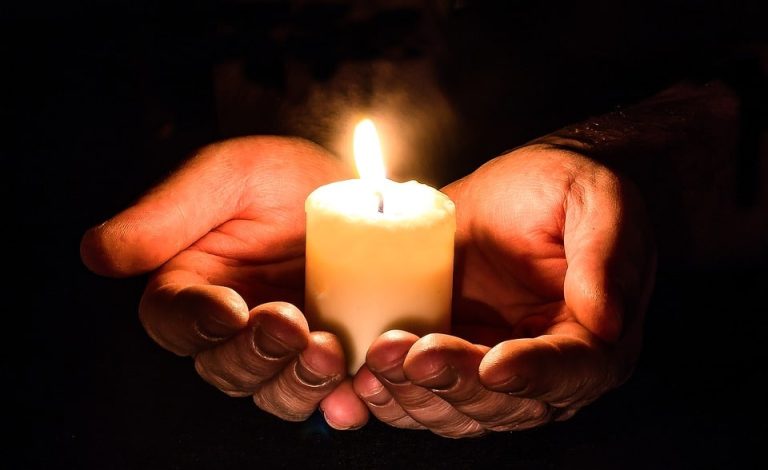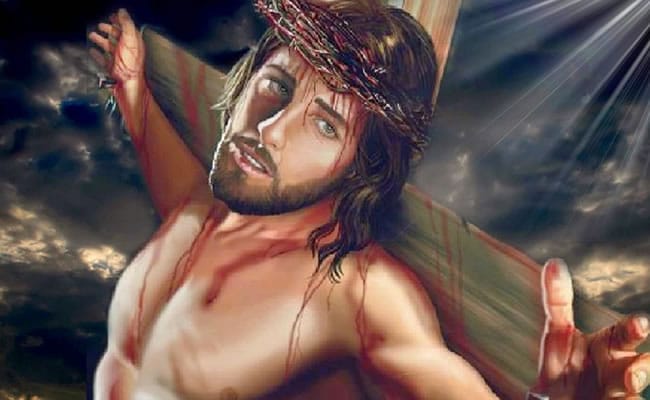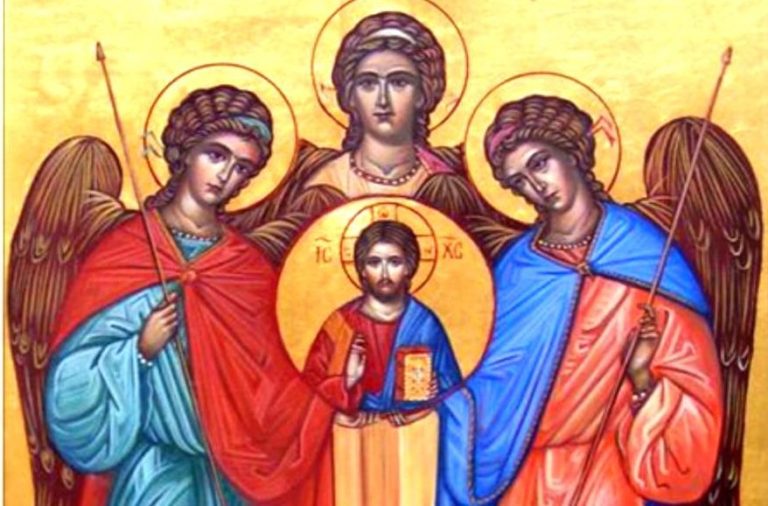Council of Nicaea: history, events, objectives and everything you want to know
The Council of Nicaea is particular because the attendance of bishops from different regions where Christians were found was reported. It took place as soon as the churches in which they enjoyed peace and freedom. Although the bishops who participated in these ecclesiastical precincts in a present physical way, would bear all the punishments they underwent to be faithful to their religion, the idea of this goal was to talk about Jesus and a sublime nature.
The Council of Nicaea is an Ecumenical Council, this means that the restoration of the unity of Christians at a universal level was sought, it was held in the year 325 from May 20 to July 25.
Announcement
It was Constantine I, the Roman emperor, who freed the Christians, thus allowing everyone to gather and practice their ceremony (he issued the Edict of Milan in 313). Thus showing sympathy for religion, this meant that Christians would not suffer any persecution. He considered this meeting pertinent, since after the emperor had achieved victory over Licinius in the year 324, the Empire was unified, and in turn he wanted to see the reunification of the Church, and taking advantage of the power that he exercised at that time in practically everything the Roman Empire.
Constantine is the one who convenes said council of Nicaea, also known as ecumenical, offers the city of Nicaea currently located in a city in Anatolia, where the imperial summer palace was located. The emperor follows the recommendations dictated by Osio de Córdoba who was the most important ecclesiastical figure of the moment.
In such a meeting, the religious representatives of that time should set themselves as main objectives: to forget the religious divisions, to give way to the union of the Christian church and also to discuss the divinity of Jesus.
Basically, the purposes of the Council of Nicea was to resolve the contradictions that existed within the Church of Alexandria around the nature of the Son in relation to the Father; If the Son had been “begotten” by the Father from his own being!, and therefore had no beginning, or else he had been created out of nothing!, he had a beginning as well.
As the meeting unfolded, an agreement was reached to recognize Jesus as the son of the true God, that is, that Jesus was the being of the Father, to make a better description of what was being declared, the word homoousios which comes from the Greek and means “same essence”, and in this way the trinity, Father, Son and Holy Spirit, was defined.
On the other hand, in Alexandria, in the year 318, Arius contradicted his bishop Alexander of Alexandria, which is why he was excommunicated from the Council of Nicaea by all the bishops of Egypt. Arius deserted and went to Nicomedia, along with his companion Bishop Eusebius Nicomedia becoming the popular presbyter, who became part of the term Arianism. Alexander of Alexandria and his disciple and successor Athanasius of Alexandria took the main position this was the main issue reacting to the Christians.
Alexander and Athanasius believed and defended their belief that Jesus had a human and divine nature and that therefore Christ was the true God and the true man, Arius and the bishop defended Christ but they affirmed that he was the first creation of God before him. beginning of all the times before created but it was not God himself.
Council Participants
The council of Nicaea is also considered the first and to which there were more than 1750 invited; 1000 from the east of Rome and the rest from the west, although the exact figure is unknown, it is presumed that only a small population attended. Some of the bishops took note of the attendance, the estimate he showed by Eusebius of Caesarea was 250, Eustathius of Antioch counted them at about 270.
At one point, Socrates of Constantinople said he saw more than 300 recorded and Athanasius of Alexandria reported 318. The exact number is said to be preserved in the solemnities of the Orthodox and Coptic Orthodox churches. Without taking into account the Council of Jerusalem in the 1st century, among those who attended and met different bishops, among whom were the disciples closest to the apostles of Jerusalem, guided by Peter and James the Just, who had been summoned by Paul of Tarsus. . This was the first and the most important.
Although Arius fled from Alexandria he attended this meeting and with him some of his theological advocates, on the opposite side of Arius was clearly Alexander of Alexandria and his young collaborator, Athanasius of Alexandria. The eastern bishops of Rome constituted the great majority. Among them were: Macarius I of Jerusalem with many of the fathers gathered as: Aristakes of Armenia, Aquilo de Larisa, Espiridón de Tremitunte. Paphnutius of Thebaid, Potamon of Heracleia, Paul of Neocaesarea, Leontius of Caesarea, James of Nisibe, Hypacius of Gangra, Protegeus of Sardica, and Melicius of Sebastoppolis.
Without forgetting the western participation of the Roman Empire, which was attended by at least 5 bishops in the Council of Nicaea: Caecilianus of Carthage, Domnus of Estridón, Marcos de Calabria, Osio de Córdoba, Nicasio de Dijon. Among Arius’ initial henchmen were: Segundg of Ptolemais, Theong of Marmarica, Zphyrio, Dathes, Eusebius of Nicomedia, Paulinus of Tyre, Actio of Lydda, Menophantus of Ephesus, and Theognis of Nicaea.
After the Arrival and when Nicea returned to his see, each bishop was given free and pleasant circulation including lodging. Each received approval to attend with 2 priests and 3 deacons.
resolutions
Arius, who had the sympathies of Constantine, thinking that as soon as he would present his ideology to the bishops at the Council of Nicaea, they would agree with them, but before he could explain, he was ahead of him, Eusebius of Nicomedia, a companion from the east, presented his opinions to explain that: Jesus Christ should be taken as a creature, although very eminent I clarify, and that he had nothing to do with the divinity of nature. Despite his efforts in the assembly, the great majority of the attendees were exalted and immediately exposed that this doctrine betrayed the faith received from the Apostles. It is there where the creed was formulated and the thesis that Arius was rejected.
The creed
The first part of the Creed was legalized in this Ecumenical Council or Council of Nicaea, remaining as follows:
We believe in one God, Almighty Father, creator of heaven and earth, of all things visible and invisible. And in one Lord Jesus Christ, the only begotten Son of God, born of the Father before all ages.
light of light; true God of true God; born, not made; consubstantial with the Father, through whom everything was made; that for us men and for our salvation he descended from heaven and became incarnate of the Holy Spirit and of the Virgin Mary, and became man. He was crucified under Pontius Pilate, suffered and was buried.
He rose on the third day, according to the scriptures; and he ascended into heaven, and he is seated at the right hand of the Father; and again he is to come in glory to judge the living and the dead; and his kingdom will have no end.
As the initial number of bishops who supported Arius was small, this Council took it upon themselves to sanction them, for which reason they had to be expelled and excommunicated because they did not accept what was established in the meeting, they continued to defend their points of view, and the great majority was against their opinions and it was an act of rebellion.
The suppression of the Meletian break was another important issue that was shown by the Council of Nicaea. Meletius of Lycopolis was ordered to continue in his city of Lycopolis in Egypt, but without exercising any kind of authority or the power to prescribe new clergy. He was prohibited from entering the outskirts of the city or entering another diocese for the purpose of ordaining. Meletius will keep his episcopal title, but the ecclesiastics ordained by him had to receive the imposition of hands again, since his mandates were considered invalid.
The Meletians joined the Arians and caused further disagreement until they died out in the middle of the 5th century.
The privileges were given to the first three patriarchal sees of Rome, Alexandria and Antioch, and the Roman custom was extended to all the Churches, arranging the date of the celebration of Easter. These are the most important celebrations for the ecclesiastical calendar, established in an epistle to the Church of Alexandria it is stated simply: the existence of Jesus as the son of God.
canons
The council promulgated twenty new laws of the Church, called “canons” that is, rules of discipline and immutable impositions
The canons are referred to as follows:
- On the admission, support or expulsion of clerics castrated by choice or by violence (prohibition of self-castration).
- Rules to be observed for the ordination of converted catechumens, in order to avoid excessive haste, and the deposition of those guilty of a serious fault.
- Prohibition to all those composed of the clergy to dwell with any woman, except a mother, sister or aunt.
- Regarding episcopal elections, the ordination of a bishop must be carried out by all the bishops of the province, but in case of urgency by at least three bishops. Confirmation must be by the metropolitan bishop.
- Regarding the excommunication.
- Prevalence of the ancient customs of the jurisdiction of the bishop of Alexandria in Egypt, Libya and Pentapolis, the same as those of the bishop of Rome, Antioch and those of the other provinces. Bishops are not to be appointed without the consent of the metropolitan.
- Confirmation of the right of the bishops of Jerusalem to enjoy certain honors, recognizing him in second place in his province after that of Caesarea.
- Regarding the readmission of Novatians.
- Whoever is ordained without examination will be deposed if it is later discovered that he had been guilty.
- Slips that have been knowingly or surreptitiously ordered should be excluded as soon as their irregularity is known.
- Penance to be imposed on apostates from the persecution of Licinius.
- Penance to be imposed on those who supported Licinius in his war against the Christians.
- Indulgence to be granted to excommunicated persons in danger of death.
- Penance to the catechumens who were stationed under persecution.
- Bishops, priests and deacons must not be rotated from one Church to another, therefore they must be returned if they try.
- All clerics are strictly prohibited from leaving their church. Formal prohibition for bishops to ordain for their diocese a cleric belonging to another diocese.
- Clerics are prohibited from lending at interest.
- It reminds the deacons of their subordinate position with respect to the priests. They will not administer the Eucharist to presbyters, nor will they touch it before them, nor will they sit among the presbyters.
- Paulianists (supporters of Paul of Samosata) must be re-baptized and deaconesses must be counted among the laity.
- On Sundays and at Pentecost everyone should pray standing and not kneeling.
Note: The exact number of canons is still under debate.
The Nicene Symbol
The Nicene symbol also known as the symbol of faith is an irrefutable declaration to understand the Christian faith proclaimed in the Council. The main objective is that the Nicene Creed would be brought to consensus as a concept of the beliefs of the Christian faith, held back until then by the scarce faith and the strong regional varieties that existed.
The main adversary of the Nicene doctrine were clearly those sympathetic to Arianism, a theological current led by the African priest Arius who never accepted “Jesus Christ as God Himself”, as stated in the interpretation of the theologian Meeting of the Council of Nicaea I; These theological problems will not be resolved until the First Council of Constantinople, when the divine character of the Holy Spirit was definitively affirmed.
What was Constantine’s role in the council?
The writer Eusebius of Caesarea, very close to Arian theories, dramatizes in his writings the influence of Constantine I on the Council of Nicaea. If we only orient ourselves from that source, it could be thought that the Emperor, in addition to pronouncing the first words of greeting at the beginning of the assembly that took place every day, had the leading role in interceding with the reconciliation against the adversaries and restoring harmony, imposing also in the doctrinal questions above the orders of the bishops who were in the Council. It is a skewed version of reality.
Constantine I, although he was sympathetic to the Christians, abandoned his ideals and it was not until his deathbed that he decided to receive baptism. However, the bishops considered him a Christian since in the aftermath of his military victory over Maxentius in 312, he had implored the God of the Christians before the battle. This is why the bishops interpret his victory as an indication of the superiority of the Christian God, and although he was careful to share this interpretation with his troops. The version presented by Eusebius of Caesarea in his work Life of Constantine says the opposite.
Even so, the author JM Sansterre, in his work Eusebius of Caesarea and the birth of the Caesaropapist theory, has debated this position, affirming that Constantine’s work was careful in matters that were the strict competence of the council fathers. This is reinforced by each of the articles in the Catholic Encyclopedia, which maintains that Constantine I could never influence theological issues, since his education regarding him was practically nil. but even so, the discussion continues in different parts of the empire.
Consulting the largest number of available sources, we can say that, clearly, Constantine I had as a protagonist to propitiate the festival of the Council of Nicaea and was added to the fact of its festivities, presenting all his support.
However, the thesis of the documents shows that the emperor never added to the education to the faith that was made in the Creed, because he did not have the theological capacity to dominate the issues that were debated there, but above all because the affirmed procedures did not they coincide with his personal inclinations that sway more towards Arian lines, that is, to imagine Jesus Christ as a God, if not an eminent creature.
Result of the Council of Nicea
Fundamentally, these were events of the Ecumenical Council of Nicaea, this has not been the council, others with different Christological issues to present continued for decades, what if we affirm is that the Council of Nicaea was the one that solved a reason of great importance for the Catholic religion in an outstanding way and making it clear that Jesus existed for Christianity.
In those years it is said that the books defending heresies by the council were the Arian scholarly writings, copies of which were burned after the council. Finally, Emperor Theodosius decreed the creed of the Council of Nicaea as the law for his command and convened the Council of Nicaea. Constantinople.
Understood this, let’s see a brief synopsis on the role of what was especially the Council of Nicaea.
According to the bible, the council of Nicaea was the second to pronounce, the first refers to what happened in Jerusalem. For the bible, the religious councils are debatable, as in Mark 3:6 it is pointed out that the Pharisees held meetings with the king Herod, intending to betray Jesus. In the year 325, on July 25, the bishops of the council celebrated the twentieth anniversary of the emperor and then decentralized, ending the assembly.

Hello! Let me enthusiastically introduce myself as a dedicated blogger fueled by an intense passion for meticulously crafting insightful and well-researched blogs. My mission revolves around providing you, dear readers, with a veritable treasure trove of invaluable information.






